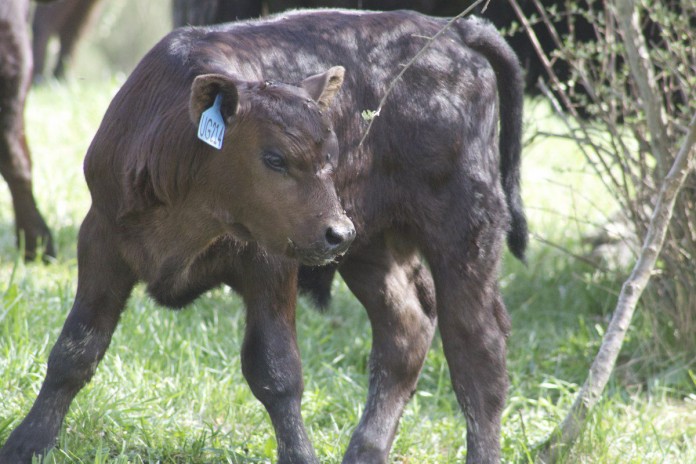As the winter season continues for us and spring is fast approaching, it is time for spring calving. For some calving season has started and for the rest who calve in the spring, calving season is starting soon.
Since the start of the year here in Ohio, we have seen a wide variation of weather conditions. We have had cold and warm temperatures, rain and snow and it’s also been muddy. Most people in Ohio calve outside on pasture, and that can be tough on the pastures.
Pasture management can be difficult no matter the time of year, but winter and early spring can be especially challenging. There are a lot of things to consider when it comes to calving pastures, like field conditions, where is the water, how far is away is the field from your facilities if you need to get a cow in a better place to assist her and whether you are feeding hay or are the cows on a stockpiled field.
Mud equals stress
Mud may be one of the most problematic things we deal with during calving. It can cause problems for both cattle and pastures. Mud can increase stress for cattle by requiring 30% more net energy for maintenance. Small amounts of mud, between 4-8 inches, can reduce feed intake by 5-15%. When mud is 12-24 inches, feed intake can be reduced by 15-30%.
The pastures also have stress on them as well. When stockpiled forages are gone and the ground is thawed, paddocks can decline rapidly. Feeding round bales is where you are most likely to see the most damage because the cattle are spending most of their time there eating. Areas where you are driving to get hay to cattle can become problem areas as well, especially driving uphill and through gates.
You can reduce damage in the field by having hay in one location, water in another location and mineral in a different location from those two, so the cattle get around and move to minimize major damage to one location.
Reducing mud
There are a few options that can help you reduce mud in your pastures, especially if you are calving in them. If you have a larger herd one option could be to reduce the stocking density on one field and maybe divide into two groups, so there is less foot traffic on the pastures. You can divide your groups by when they are due to calve.
Fields that sit higher in elevation and have some slope to them will dry out faster because water will drain off easier, and sun and wind will reach these areas first, to help them dry out. As compared to fields that sit low and have no slope, and just sit wet for the winter months.
Another option could be calving on a hayfield that has a good sod base to it and does not sit wet. This field will have some sort of growth that can be grazed. The amount depends on when your last cutting was, you may need to supply some sort of supplementation, like corn and minerals. If you do choose this as an option one thing to watch for is “pugging” from the hoof action, also need to consider water source, fencing and moving of animals.
What we do
On our family farm, we have a hayfield where we put our spring calving herd on for the first three to four weeks of calving in March.
We have three fields that are for both grazing and hay, and we stop grazing them by mid-April, getting one to two grazing passes before we let the fields grow for hay. We see little reduction in the hay yield doing this.
This allows us to graze and stop feeding hay sooner. Just remember if you choose to graze a hayfield, move the cattle before it gets muddy in the field.
A future option that you may consider is the use of a heavy-use pad to feed on and to put cattle on when weather conditions are bad so that you can limit damage to your fields. One option that should be considered as the last resort option is the use of a sacrifice pen. The pen should have easy access to feed hay, very little slope for no erosion, and easy to reseed.
Remember one thing, sometimes Mother Nature wins.













